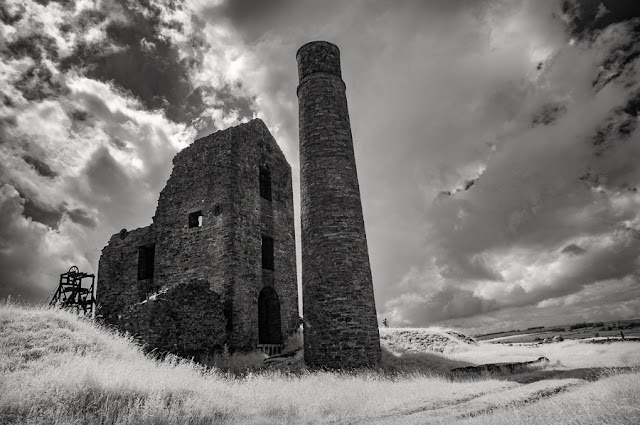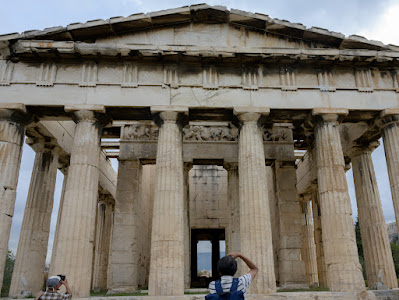Peak District workshop and the curse of the Magpie Mine
My day on the Peak District workshop called 'the natural and man-made landscape' started with a short presentation by the two leaders, Paul Hill and Nick Lockett. Nick's wife had also come along to help with providing refreshments for us all and also to talk photography. We then walked from Monyash down Lathkilldale which I have covered in the previous 2 blogs. We took photos in the dale, and then it started to rain, torrentially. A hasty journey back to the village saw us landing in rather a nice café for lunch and a photographic conversation which was good.
Replete we travelled by car the short distance to Magpie Mine, the remains of which are thought to be the best example in the UK of a 19th century lead mine, dating back to 1793. Lead has been mined in Derbyshire since the bronze age and this dangerous work continued in the area until 1950 when after periods of inactivity and resurgence Magpie Mine finally closed and was taken into the care of the Peak District Mines Historical Society.
We parked by the pit head and left the cars unlocked so that we could run for cover from the intermittent heavy showers. The weather suited the other sombre history of the mine which is thought to be cursed. In the 1820's and 30's workers from 2 mines, the Magpie and the adjoining Maypitt mine were working the same Great Redsoil Vein and would fight over who was to work a particular seam. Each would light fires underground to smoke out the opposing team of mine workers using burning straw, sulphur and oil. This went seriously wrong when fires lit by the Magpie men, who happened to be 'incomers' from Cornwall, suffocated and killed 3 of the Maypitt men who were local. 24 of the Magpie miners were arrested for murder, but only 5 were imprisoned. These were released after a year as it was difficult to identify the ringleaders, and because the Maypitt miners had been employing the same tactics.
The upshot of this was that the mine closed in 1835. Over the next hundred years the mine was to open and close as attempts were made to revive it. But it was dogged by flooding and the wasted effort of trying to drive a tunnel 2km through solid rock to finally drain the mine. It was thought that a fresh rich seam of lead lay beneath the one that was currently being exploited, but it was a false premise and after 8 years digging the drain, the mine closed again in 1883. Afterwards it opened sporadically finally closing in the 1950's.
It is a very impressive site with workings similar in size to the tin mines of Cornwall. I photographed it with the infrared camera and used my 'normal' Nikon to make some multiple exposure pictures of the place, to try and achieve a more emotional response to the scene.
We did not spend long at the mine as the rain was too intense. When we got back to the church hall where the workshop was based, the road was flooded outside and the remaining cars standing in 6 inches of water. I could understand the difficulties of the mine workers if they had to contend with that much rainfall!
We spent a little time processing our pictures and then shared the results with the other participants. It had been a long day, we didn't finish until nearly 7.00pm. But it was very enjoyable and gave me lots to think about, especially the use and production of project work.
Here are the pictures!















Comments
Post a Comment